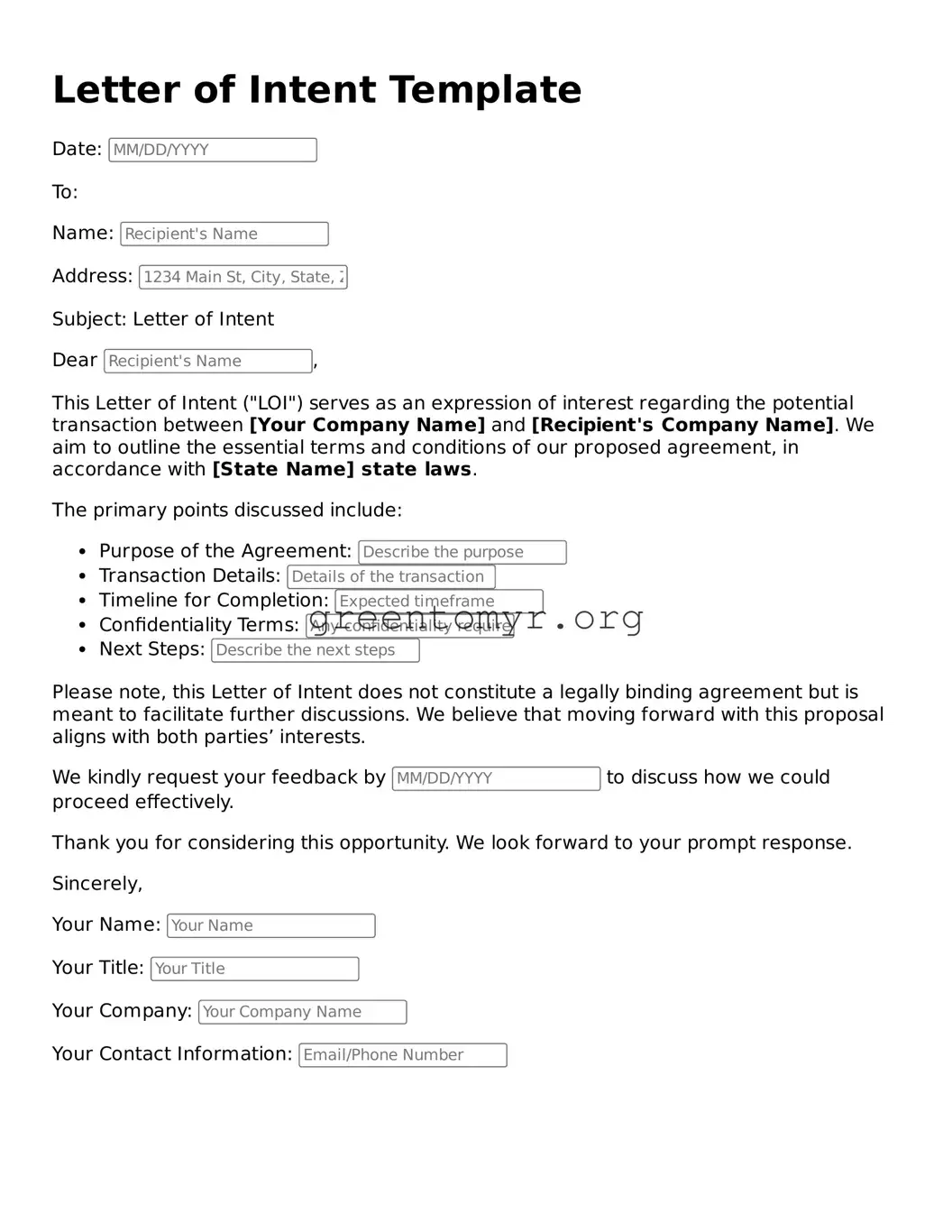Filling out a Letter of Intent (LOI) can be an essential step in various situations, such as business negotiations or college admissions. However, people often stumble in this process. One common mistake is simply overlooking the importance of clarity. When individuals write their intent without being specific, it can lead to misunderstandings down the road. A clear, concise declaration of purpose helps establish mutual understanding between parties.
Another frequent error involves neglecting to tailor the LOI to the specific recipient. A generic letter may lack the personal touch that captures attention. Addressing the recipient by name and incorporating relevant details shows that you’re invested in the relationship and understand their needs. This minor customization can significantly improve the letter's impact.
Many people also fail to proofread the document carefully. Spelling and grammatical errors can create a negative impression. Investing time in editing can save you trouble later on and ensures your professionalism shines through. An eloquently written letter reflects your commitment and diligence.
Additionally, some individuals mistakenly include jargon or overly complex language. While you might want to sound knowledgeable, using simple and straightforward language often has a stronger impact. This approach makes your intentions easily understandable, allowing the reader to connect better with what you’re trying to communicate.
Another oversight occurs when individuals forget to include essential details. Omitting information like deadlines or specific commitments can lead to confusion. It’s crucial to ensure that all necessary facts are included to provide a comprehensive view of your intent. This also emphasizes your seriousness about the matters at hand.
It's not uncommon for people to underestimate the importance of formatting as well. A well-organized LOI with clear paragraphs and headings is easier to read. A cluttered or poorly structured letter can distract from the message you wish to convey. Proper formatting enhances readability and demonstrates your attention to detail.
Some may also make the mistake of being overly vague about their expectations. Providing concrete examples of what you hope to achieve can help clarify your objectives. The more specific you are about your desires and goals, the more likely you are to receive the outcome you seek.
Another pitfall is focusing solely on yourself or your organization. While you want to convey your intentions, neglecting to acknowledge the recipient’s objectives can make your letter seem one-sided. Including language that highlights mutual benefits can foster a sense of partnership and cooperation.
Furthermore, individuals sometimes forget to follow any specific guidelines provided by the other party. If there are instructions on how to format or present your LOI, adhering to them is crucial. Disregarding these details can lead to dismissal or misinterpretation of your document.
Finally, many fail to sign the LOI, which may seem trivial but is a critical step. Your signature indicates authenticity and commitment to what you've outlined in the letter. Omitting it can suggest a lack of seriousness or intent, potentially undermining the entire communication.
